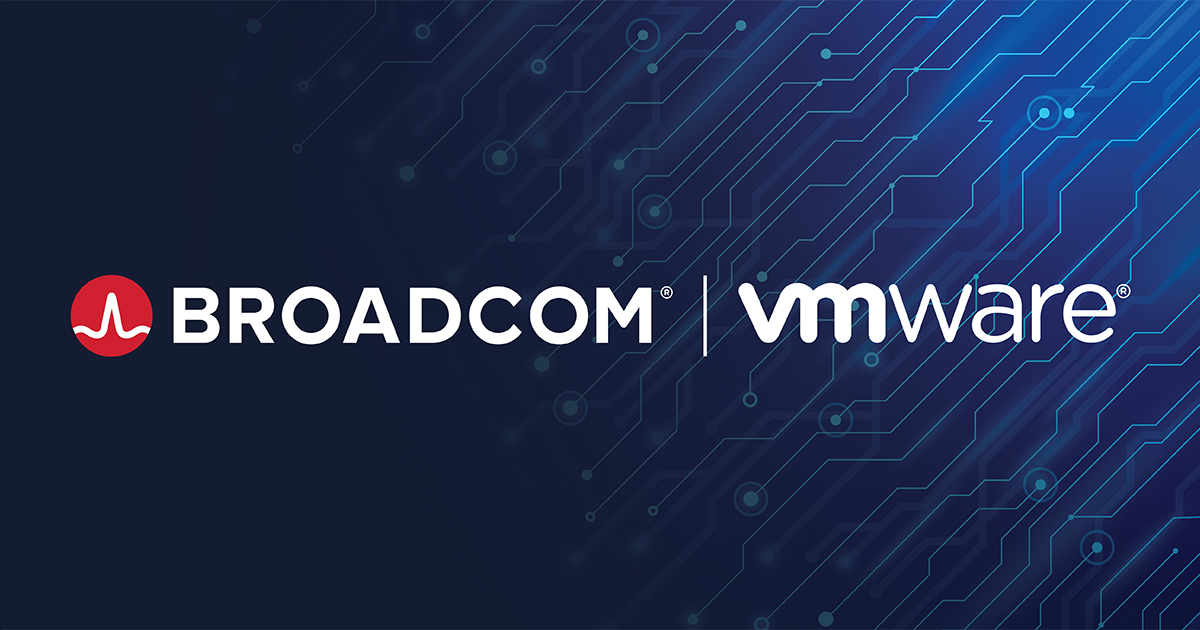Since Broadcom completed its acquisition of VMware in November 2023, there has been a lot of noise and confusion around what is happening in the channel and with VMware customers. This research note is intended to articulate what is and isn’t going on and give some thoughts on how I believe the world will look after the dust settles on this acquisition.
Change is disruptive
“Change is disruptive” is an understatement, especially in the IT solutions market. Whether that change comes from a new technology, a new business model, or an acquisition, it can upset routines and cause short-term angst even when the change ultimately benefits customers.
As an example, I remember when Microsoft realized the significance of Azure and started putting a serious push behind its adoption. As the company began shifting customers to this new model of consuming IT services, channel engagement was disrupted. I had a colleague and friend who was tasked with implementing channel programs for Microsoft. During that period, there wasn’t a single conversation we had where the topic of channel revolt didn’t come up. As he was looking to shift the selling and support motions of channel partners that had been loyal Microsoft sellers for decades, the constant pushback he received led him to wonder whether the company would even maintain a channel program moving forward.
Six months and a few tweaks later, the channel programs were humming along, and everyone involved was in a better place—channel partners, Microsoft, and (most importantly) customers.
The scenario playing out with VMware is a bit more complex than the Microsoft transition. However, I’m still convinced that the result will be the same in the end.
What is going on in the VMware channel?
There have been numerous articles speculating about what VMware is doing in the channel. As one would expect after such a large acquisition, there’s a lot of hysteria. One headline in particular spoke of how Broadcom was “whacking” the VMware channel program. While it’s technically accurate that the old VMware channel program is going away under the new ownership, what was missing was any kind of qualifier describing how the old program is being folded into the Broadcom Advantage channel program—in other words, how it is becoming part of a single channel program to support the entire Broadcom portfolio.
This approach is very logical. Maintaining separate channel programs for each family of products makes no sense. In fact, doing that would be far more costly and inefficient, not just for Broadcom-VMware but also for the channel partners. If there is a logical counterargument to Broadcom’s approach, I haven’t seen it.
As part of this change, the Broadcom team sent out invitations to existing VMware channel partners. Any active partner (defined as engaged in the last 36 months) was invited to join the Broadcom program at a tier equivalent to the one they had been in with VMware. There’s no cost to join. And there’s no secret oath of allegiance or unholy ritual required. Simply join the new program and keep on keeping on with what you were doing when VMware was an independent company.
Let’s be fair to the critics, too. Could Broadcom have been more proactive in communicating these changes before sending out its communiqué to the channel? Yes. Further, I think the channel team would have been well served to reach out to media outlets and other influencers to socialize these changes. That would have made the transition smoother and removed some of the FUD in the market.
With all this said, what’s happened has happened, and the VMware channel program has given way to the Broadcom program. I would like to hear from partners of all tiers with their initial thoughts regarding enablement and activation. Are marketing development funds (MDF) available? Are trainings happening? Is there equivalent deal support? These are the truly important things.
If you want to hear directly from Broadcom about its channel program, you can read the company’s blog post about it as well as its FAQ for channel partners. And if you still have questions, I would strongly recommend contacting Broadcom directly.
Aligning products and licensing
There has also been a lot of FUD around products and licensing. In the following paragraphs, I will try to provide more clarity and then point you to Broadcom resources that will add more depth. As with the channel issue above, I would point customers directly back to their Broadcom representative if they have any environment-specific questions.
It’s worth setting some context before highlighting what I see as the significant changes. From my perspective, Broadcom appears to be focused on simplifying its product portfolio without sacrificing functionality. Simultaneously, it is looking to shift all of its licensing to a subscription-based model. These are two huge transitions.
On the VMware product front, the company has essentially moved to two offerings:
- VMware Cloud Foundation (VCF) is targeted at delivering hybrid cloud capabilities to enterprise customers.
- VMware vSphere Foundation (VVF) is targeted at delivering vSphere with intelligent management for small enterprises and mid-sized customers.
As part of this realignment and rationalization, you may have read that Aria, the company’s cloud management platform, has been discontinued. This is also technically true—but also requires context about what’s really happening. While the Aria standalone, suite, and SaaS offerings have been discontinued, its cloud functionality has been subsumed into VVF (operations management) and VCF (core operations management and infrastructure automation platform). For existing customers, this will create some bumps in the road operationally when they transition away from their current Aria implementation (the company is honoring existing licenses). For new customers? I see this as a positive because it means one less interface from which to manage my hybrid multi-cloud environment.
It is worth mentioning that VMware had already been tinkering with its licensing long before it became an acquisition target for Broadcom. Back in the mid-2010s, the company tried to shift its licensing model to align with what Microsoft, Oracle, and other vendors were implementing. After a loud customer revolt, it acquiesced. Since then, we’ve seen the industry generally move from perpetual to subscription-based models and away from using CPU sockets to CPU cores (which the rest of the industry did years before). While this is not what many customers want, it’s a market dynamic that Broadcom is understandably aligning to.
Broadcom claims that customers will achieve cost savings through its new bundled licensing. I agree that this will be the case for many customers—although for some customers, it will in fact be more expensive. That depends on how much VCF or vSphere Foundation is being consumed, but that’s an exercise customers need to work through on their own.
My advice to IT organizations grappling with this licensing issue? Do the math, contact your Broadcom rep, and have a discussion. You will reach a resolution, one way or another. However, please don’t take what you read in the press or from analysts (including me) as gospel. As well-intentioned as many of us pundits are, we aren’t always accurate—and, of course, we can’t know the details of your particular situation.
The company has done a good job of detailing its transition to subscription-based licensing and what this means for its perpetual and SaaS-based products in this blog post. While the post (obviously) gives a positive VMware spin on the transition, there’s also a bit of good information there.
VMware isn’t going anywhere
In the wake of the Broadcom acquisition, VMware’s competitors have done what any competent marketing organization would do by creating a bunch of FUD around all of the changes. Based on the more extreme takes I’ve read in the press, I would think that VMware will shut down operations in the next six months, with all of its customers forced to move on to alternative solutions. Miraculously, all of these press accounts include supporting quotes from competitors who are more than ready to swoop in and take VMware’s business.
Here’s the reality. VMware’s products have sunk deep roots into the enterprise datacenter. In fact, many IT organizations have built their datacenters around VMware products. There’s a reason for this. The company has been amazingly good at understanding what is important to enterprise organizations. And as new imperatives have crossed the paths of CIOs and other technology leaders, VMware has been there to help. Cloud? Check. Security? Check. AppDev? Check.
None of these facts has changed since Broadcom’s acquisition. Further, I don’t believe that Broadcom would dream of managing VMware as anything other than a strategically important portfolio that will continue to innovate in this data-fueled AI era. Broadcom is much too smart to stifle a perpetual winner like VMware. Rather, I expect to see investments made in the VMware portfolio to drive additional value for enterprise customers.
Will the company lose some customers? Certainly—that’s inevitable. In particular, I believe there is vulnerability in the small enterprise and SMB markets—those customers for whom the economics don’t work as well and whose environments aren’t built around the VMware toolchain.
As I said at the outset, change is disruptive. And the competition has been aggressively trying to take advantage of the disruption caused by the Broadcom acquisition. However, I believe this dustup will be a faint memory six months from now, and we’ll be writing about the next acquisition from another tech giant.
























































































